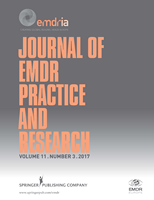
Kronos Abuses His Son: A Case Study of Severe Interpersonal Trauma, Dissociation, and Survival in Adolescence
This case study presents case conceptualization, therapeutic intervention, and the subjective and objective therapeutic progress of a 14-year-old adolescent hospitalized with posttraumatic stress disorder (PTSD) following emotional, physical, and sexual abuse by his father. The adaptive
information processing (AIP) model that informs eye movement desensitization and reprocessing (EMDR) therapy and the theory of structural dissociation of the personality (TSDP) were used to conceptualize and guide the treatment. Stabilization and orientation to the present were essential to
integrate his traumatic memories into a life narrative, and this became a major goal and an outcome of treatment. A single-case AB design was applied in assessing the impact of intervention. The UCLA PTSD Symptom Scale, Strengths and Difficulties Questionnaire—HEL (SDQ-HEL), State-Trait
Anxiety Inventory (STAI), and Dissociative Experiences Scale II were administered at 5 different time points to assess changes in the youth's subjective emotional state and indicated substantial improvement. In addition, objective behavior change (using O'Neill's Behavior Checklist) was recorded
on a daily basis for 7 months and showed a large decrease in the frequency of targeted maladaptive behaviors. The article describes the treatment process which helped the youth to regain a sense of time; establish a coherent sense of self; and maintain adaptive perceptions, emotions, attitudes,
and behaviors.
Keywords: ADAPTIVE INFORMATION PROCESSING MODEL (AIP); CHILDHOOD AND ADOLESCENCE; DISSOCIATION; EYE MOVEMENT DESENSITIZATION AND REPROCESSING (EMDR); POSTTRAUMATIC STRESS DISORDER (PTSD); THEORY OF STRUCTURAL DISSOCIATION OF THE PERSONALITY (TSDP)
Document Type: Research Article
Publication date: 01 November 2017
- The Journal of EMDR Practice and Research is no longer available to subscribers on Ingenta Connect. Please go to http://connect.springerpub.com/content/sgremdr to access your online subscription to Journal of EMDR Practice and Research.
- Access Key
- Free content
- Partial Free content
- New content
- Open access content
- Partial Open access content
- Subscribed content
- Partial Subscribed content
- Free trial content